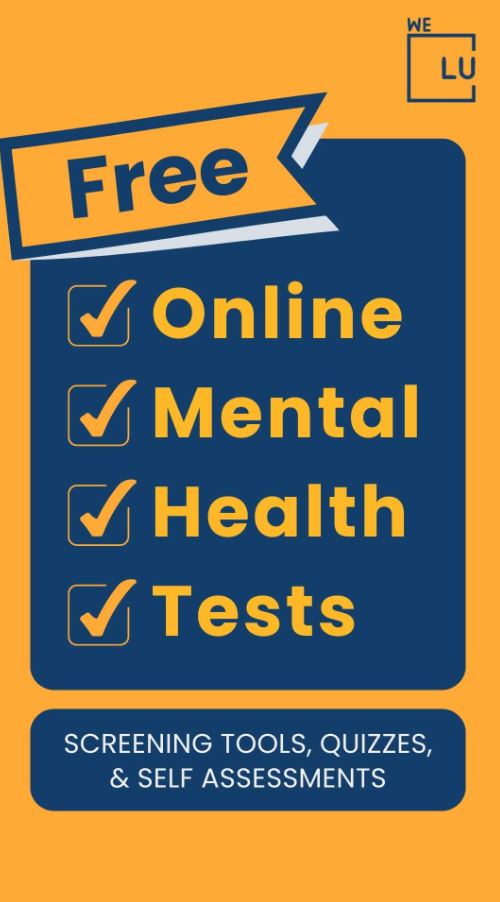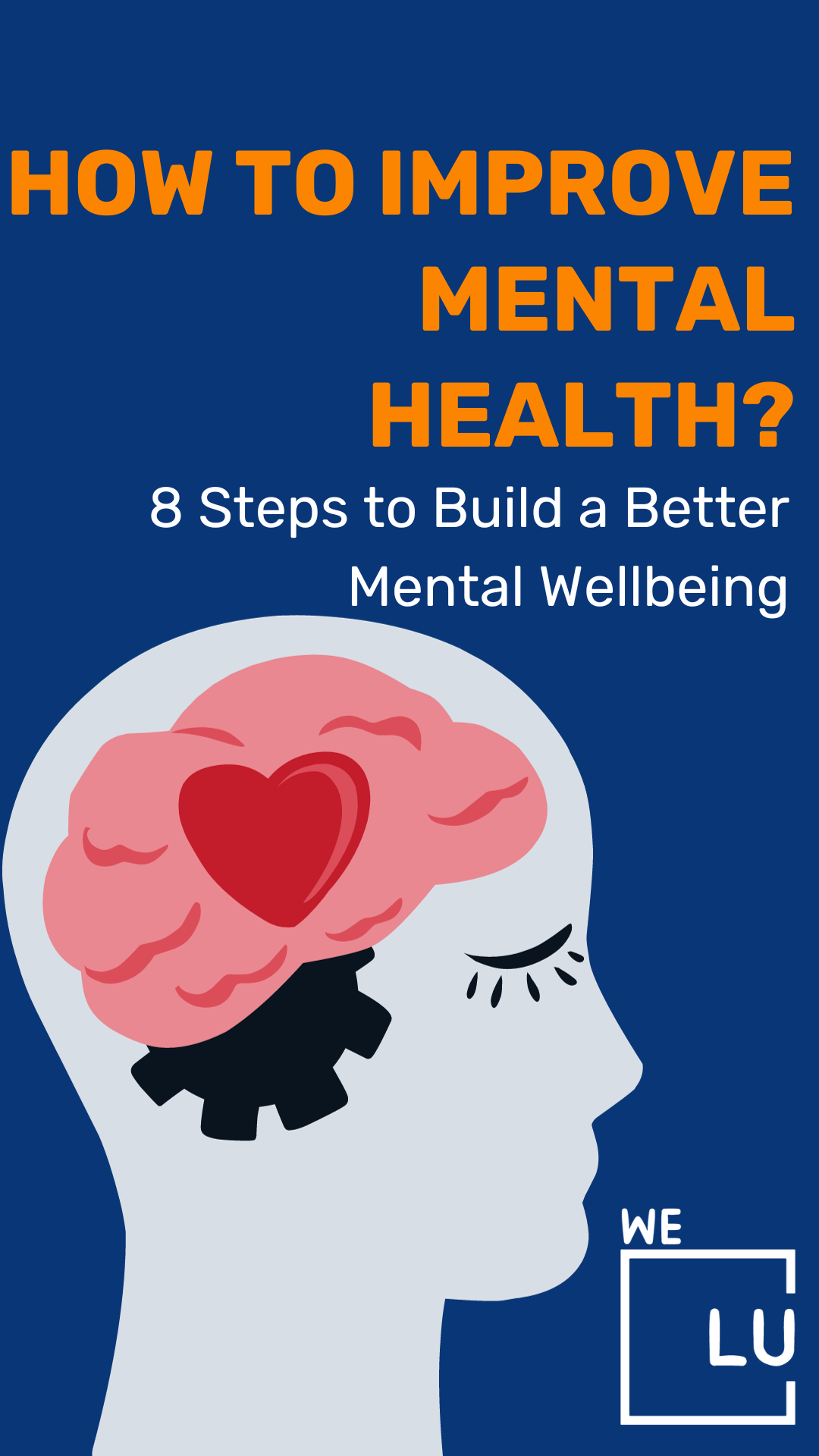Meth Symptoms In Adults (Symptoms Of Meth Use): Meth Addiction Symptoms – Meth Symptoms Adults
Meth Use Symptoms: Meth is one of the most deadly drugs available due to the severe psychological and physical toll it has on the body. Meth has a profound impact on a user’s body and brain, and these symptoms and warning signals can be seen in a number of ways.
Meth Exposure Symptoms: An abrupt loss of interest in activities that were once meaningful to the person is among the earliest signs of meth consumption. The pursuit of and use of meth will start to take precedence over interests, relationships, and professional aspirations.
Meth Symptoms And Effects: Many people will first try to conceal their drug use, but the more time someone spends using Meth, the more noticeable it becomes in their lives. Due to the molecular changes caused by methamphetamine, what was previously a recreational drug use might become a top priority in one’s life.
Meth Signs And Symptoms (Symptoms Of A Meth User): Symptoms Of Smoking Meth – What Are The Symptoms Of Meth?
Symptoms Of Crystal Meths: Meth abusers and addicts will show a range of behavioral and physical signs. Among the most typical meth symptoms are:
- Hyperactivity
- Twitching, facial tics, jerky movements
- Meth High Symptoms: Paranoia
- Dilated pupils
- Noticeable and sudden weight loss
- Skin sores
- Rapid eye movement
- Reduced appetite
- Agitation
- Burns, particularly on the lips or fingers
- Erratic sleeping patterns
- Rotting teeth
- Outbursts or mood swings
- Extreme weight loss
Symptoms Of Meth Exposure: “Tweaking,” a period of anxiety and insomnia that can persist for three to fifteen days, is another obvious sign of meth use. Tweaking happens at the end of a drug binge when a meth user is no longer able to experience the rush or high.
Symptoms Of Meth Usage: Due to the need to use it again, tweaking can have psychological adverse effects like paranoia, impatience, and confusion. Meth-related tweaking can also lead to hallucinations and a propensity for violent conduct.
Meth Comedown Symptoms (Meth Abuse Symptoms): Meth Addict Symptoms or Meth Detox Symptoms
Meth Users Symptoms: The crash phase is another indication that someone is using meth. The body is deprived of the dopamine that Meth was previously supplying during this time, which results in tremendous tiredness. Long stretches of sleep, strong drug cravings, and depression are the hallmarks of a crash, which can persist for one to three days.
Meth Baby Symptoms
Meth can cross the placenta and get to the fetus when pregnant women use it. Prenatal meth exposure increases the likelihood of the following conditions and birth defects:
- Premature birth (delivery before week 37 of pregnancy)
- Low birth weight
- Small head size
- Brain and heart abnormalities
- Cleft palate
- Vision problems
- Malformed ribs
- Delayed physical growth
- Placental abruption (separation of the placenta from the uterus), which can deprive the fetus of oxygen and essential nutrients and cause a fatal amount of bleeding in the mother
- Sudden infant death syndrome (SIDS)
In addition, if a pregnant woman consumes meth close to the conclusion of her pregnancy, her unborn child may develop a physical dependence on the substance and suffer from neonatal abstinence syndrome.

Skip To:
Learn More:
- Do Crystals For Depression Work?
- Depression and ADHD: What’s the Link?
- Autism and Depression Connection, Diagnosis & Treatment
- Signs of Depression in Men, Causes, & What to Know
- Rehab for Depression & Anxiety Treatment
- What is the Best SSRI for Anxiety?
- Social Anxiety Disorder
- Grounding Techniques for Anxiety Attacks
- Mental Health Poems that are Powerful and Healing
- Short-Term Disability Mental Health
Get Help. Get Better. Get Your Life Back.
Searching for Accredited Drug and Alcohol Rehab Centers Near You?
Even if you have failed previously and relapsed, or are in the middle of a difficult crisis, we stand ready to support you. Our trusted behavioral health specialists will not give up on you. When you feel ready or just want someone to speak to about therapy alternatives to change your life call us. Even if we cannot assist you, we will lead you to wherever you can get support. There is no obligation. Call our hotline today.
(844) 597-1011Methamphetamine Factsheet
What is Methamphetamine?
Meth is a highly addictive stimulant that can cause addiction in as little as a single use. This is mainly due to the rush of dopamine produced by the drug. Dopamine is a chemical that’s not only responsible for inducing feelings of pleasure, but also for motivation, memory retention, learning, and reward processing. The rush of dopamine produced by Meth is much higher than the natural amount of dopamine that is produced in the brain, which causes people to continue using the drug in order to keep those heightened and pleasurable feelings.
Methamphetamine Effects
Abuse of methamphetamine includes any illegal usage of the drug. When smoked or injected, meth causes a “rush” similar to that experienced when using crack cocaine; this is brought on by an increase in heart rate, blood pressure, and pleasure-inducing neurotransmitters in the brain. Snorting meth produces an ecstatic feeling but not a rush.
The biggest effects are produced by the infusion rush, which can last up to 30 minutes. Depending on how the drug is used, users enjoy a sustained high that can continue anywhere between 8 and 24 hours after the first surge. Meth injection delivers a higher high than smoking or snorting it, although the high lasts less.
Street Names for Methamphetamine
Meth and Crystal Meth are chemically identical substances, despite the differences in the structural composition of the two varieties. Methamphetamine goes by the following street names:
- Glass
- Speed
- Ice
- Crystal
- Crank
- Tweak
- Redneck Cocaine
- Chalk
The vast bulk of meth that is sold today comes from imports and clandestine labs. A few people will often generate modest amounts of the material in “home labs” or “stove tops,” where the product is typically cooked. Meth is also made in cartel “super labs,” which use high-end machinery to generate the drug in greater quantities and with superior quality.
The stimulant Ephedrine or Pseudoephedrine, which is present in certain popular over-the-counter cough and cold treatments, is often the main component in meth. Meth labs are famously hazardous due to the toxic and flammable gases and chemicals generated during the production of the drug.
Methamphetamine Statistics
550 Million
Meth costs the United States $550 million in drug treatment programs each year.
Source: NIDA
16 Million
According to the 2017 National Survey on Drug Use and Health, 1.6 million people reported using Meth in the past year.
Source: NIDA
964.000 People
An estimated 964,000 people aged 12 and older qualify as having a Meth use disorder in 2017.
Source: NIDA
Meth Paranoia Symptoms (Signs And Symptoms Of Meth Use): Symptoms Of Meth Abuse

Meth, sometimes known as meth, is an illegal substance that has effects on the mind. Meth psychosis, a mental health condition that can alter a person’s senses and perceptions, is a possible adverse effect of meth use. Meth-induced psychosis can occur either while a person is high on the substance or after it wears off.
Meth Psychosis Symptoms (Symptoms Of Meth User): Symptoms Of Using Meth
Meth psychosis is a mental illness that can cause intense paranoia or hallucinations. It affects a person’s thoughts and emotions. Those who are experiencing psychosis may experience both hallucinations and delusions at the same time.
Chronic meth users run the danger of developing psychosis, which results in hallucinations, delusions, and compulsive behaviors. In a recent research on meth users, heavy users were 50% more likely than other users to experience hallucinations, which affected 17% of them.
In addition, psychosis brought on by meth might increase hostility against other people and impair impulse control. Meth sores are visible lesions caused by persons picking at or scratching their skin when they become more impulsive and obsessive.
Picking at their skin causes ulcers, abscesses, or infections in about 31% of meth users overall; strong meth users are more than twice as likely to experience these problems.
What Causes Meth-Induced Psychosis and Who Is at Risk? Symptoms Of Someone On Meth (High On Meth Symptoms)
Meth is a stimulant substance that boosts dopamine production while also increasing brain activity. An imbalance results from elevated dopamine. The fast fluctuation in dopamine levels in the brain brought on by this chemical change might result in psychosis and severe mood swings.
The brain regions that control emotions and impulses including fear, anger, and fight-or-flight reactions are also affected by meth. Continuous meth use can overstimulate these regions of the brain, increasing paranoia or the need to engage in violent behavior. These urges and feelings are typical signs of amphetamine psychosis.
Meth abusers are in danger of experiencing meth psychosis. The stimulant is incredibly effective and can profoundly alter a person’s brain whether they use it at the same dosage for a prolonged period of time or start out at a high volume.

Get Your Life Back
Find Hope & Recovery. Get Safe Comfortable Detox, Addiction Rehab & Dual Diagnosis High-Quality Care.
Hotline(844) 597-1011Symptoms Of Someone On Crystal Meth (Crystal Meth Symptoms): Symptoms Of Crystal Meth Use
Even if you are unfamiliar with crystal meth, you are definitely aware of the considerable health dangers, including addiction, that comes with its usage. It makes sense to feel anxious and eager to lend a hand when you have concerns for a loved one.
It might be difficult to discuss drug use with someone when you’re not certain if they need help. Though you may be concerned that you misread some cues and don’t want to insult them, you still want to offer support. Or perhaps you’re unsure that it’s appropriate for you to bring up the subject.
Whether it’s in made-up TV shows or the frequently seen “before and after” photographs showcasing missing teeth and facial sores, we’ve all seen how the media depicts those who use crystal meth. It is true that some people who use meth might experience a variety of obvious bodily symptoms, such as:
- Pupil dilation
- Quick, jerky eye movements
- Facial twitching
- Increased sweating
- High body temperature
- Jerky or twitchy body movements or tremors
- Decreased appetite and weight loss
- Tooth decay
- High energy and excitement (euphoria)
- Frequent scratching or picking at the hair and skin
- Sores on the face and skin
- Constant, rapid speech
Another mentioned may be severe headaches and trouble falling asleep. It’s crucial to keep in mind that each of these symptoms could also be caused by other disorders, such as untreated dental problems, skin conditions, anxiety, or other mental health difficulties. However, not all meth users exhibit these symptoms.
Meth Overdose Symptoms (Meth OD Symptoms): Symptoms Of Meth Overdose
Without the use of additional drugs, a meth overdose happens when a person consumes excessive amounts of the drug at once or over an extended period of time and develops a toxic response to it. Organ damage and potentially fatal cardiovascular events like a stroke and heart attack can arise from this reaction.
Mixing meth with other stimulants like ecstasy, cocaine, and amphetamines can result in similarly catastrophic cardiovascular problems. The adverse effects of taking meth and painkillers together can be more severe, unexpected, risky, and even lethal.
Meth, as previously mentioned, is a stimulant that activates the CNS, whereas opioids are depressants that slow down the CNS. Contrary to popular belief, mixing meth with opioids or other depressants such as alcohol or benzodiazepines does not neutralize the effects of the substances. In actuality, the opposite occurs. Combining the two medicines can change or even disguise the symptoms of one or both drugs, which may cause users to believe neither drug is having the desired effect and prompt them to take more of one or both drugs, which may result in an overdose.
Some might unintentionally combine meth and painkillers. As fentanyl looks like methamphetamine in powder form, it is frequently used to adulterate methamphetamine and other street narcotics. When someone unknowingly uses a substance they think is meth but is actually meth laced with fentanyl, they risk overdosing.
Understanding general warning signals can help you spot a potential overdose and get the person the treatment they need, even though the symptoms of a meth overdose—without the presence of additional substances—vary from one person to the next. Meth poisoning alone may show some symptoms, such as:
- Chest pains.
- A rapid increase in heart rate, blood pressure, and body temperature.
- Kidney problems.
- Confusion.
- Altered mental status, including psychosis.
- Heart attack.
- Stroke.
- Circulatory collapse.
- Death
Overdoses with fentanyl (or another opioid) might result in death via sluggish or irregular breathing. It could be challenging to determine whether someone is high or suffering from an overdose when meth is consumed alongside another drug, whether purposefully or unintentionally.
Meth Withdrawal Symptoms (Crystal Meth Withdrawal Symptoms): Withdrawal Symptoms From Meth
Meth User Symptoms: Many persons may experience distinct acute and post-acute symptoms from methamphetamine withdrawal. A person’s route of administration, dose, drug purity, level of intoxication, prior withdrawal experiences, the length of time they took meth, their history of meth usage, and other considerations can all affect how severe and how long their meth withdrawal symptoms last.
Acute Withdrawal Symptoms Of Meth include:
- Fatigue.
- Anxiety.
- Irritability.
- Lack of energy.
- Weight gain.
- Dehydration.
- Chills.
- Insomnia followed by hypersomnia (sleeping too much).
- Dysphoria (low mood) could progress to clinical depression and suicidal thoughts.
- The inability to think clearly.
- Anhedonia (loss of ability to feel pleasure).
- Withdrawing from others.
- Drug cravings.
Meth withdrawal symptoms that are chronic and post-acute can include:
- Depression.
- Mood swings.
- Drug cravings.
- Loss of ability to experience pleasure.
- Psychosis.
- Suicidal thoughts/ideation.
- Fatigue and excessive sleepiness.
- Increased appetite.
During withdrawal, cravings may be intense and difficult to resist. This frequently results in a relapse or return to drug use. Although the symptoms of meth withdrawal might be very severe and unpleasant, they are usually not life-threatening.
Withdrawal Meth: You should educate yourself about meth withdrawal if you or someone you care about takes meth and wants to stop. Although medical detox can help you safely and more easily manage the withdrawal process, withdrawal can be difficult.
First-class Facilities & Amenities
World-class High-Quality Addiction & Mental Health Rehabilitation Treatment
Rehab Centers TourRenowned Addiction Centers. Serene Private Facilities. Inpatient rehab programs vary.
Addiction Helpline(844) 597-1011Proven recovery success experience, backed by a Team w/ History of:
15+
Years of Unified Experience
100s
5-Star Reviews Across Our Centers
10K
Recovery Success Stories Across Our Network
- Low Patient to Therapist Ratio
- Onsite Medical Detox Center
- Comprehensive Dual-Diagnosis Treatment
- Complimentary Family & Alumni Programs
- Coaching, Recovery & Personal Development Events
Meth Addiction Treatment & Detox: Meth Symptoms
Meth withdrawal management involves removing the substance from the body while a group of medical experts assists the patient in controlling their withdrawal symptoms. The first phase of a treatment program for substance use disorders (SUD) frequently involves managing meth withdrawal, sometimes known as detox.
Most patients will benefit from further care following detoxification, such as inpatient or outpatient rehab. After completing a medically assisted detox program, patients will receive assistance in selecting the best program to address the behavioral and social aspects of their addiction (as well as other pertinent needs).
Medically assisted detox for meth withdrawal may have the following advantages:

- Risk assessment for medical and mental health issues. Medical supervision can help someone stay safe because meth withdrawal might cause extreme depression or suicidal thoughts.
- Supplying framework and assistance. This can aid in a person’s recovery and help them become ready for additional therapy.
- Removing a user of meth from their environment. This can lessen cravings brought on by environmental cues that might trigger a relapse.
- As necessary, offering dietary assistance. Someone who is battling with meth addiction may need support, such as larger or high-calorie meals, electrolyte supplements, or contact with a food professional. Meth consumption has been linked to weight loss and inadequate nutrition.
As was already said, after completing detox, patients may enroll in inpatient rehabilitation or outpatient therapy. Several behavioral therapies used in professional treatment can offer a number of advantages, including:
- Helping a patient learn ways to prevent relapse.
- Teaching a patient healthier coping and stress management skills.
- Helping a patient uncover and work through the underlying reasons they developed an addiction in the first place.
Inpatient rehab offers the additional benefit of round-the-clock supervision and assistance to help patients be safe and take care of any co-occurring problems that may develop. If a person has co-occurring psychiatric disorders or life-threatening medical issues, this additional help may be very important.
A person who is addicted to methamphetamine may benefit from the following behavioral therapies:
- Cognitive-behavioral therapy (CBT). This aids patients in recognizing negative or unhealthy attitudes and behaviors that fuel their substance usage and helping them modify them. According to some studies, CBT and contingency management are particularly effective in treating amphetamine addiction.
- Contingency management (CM). When someone demonstrates a desired behavior (like passing a drug test), it offers concrete rewards; however, if the desired behavior is not demonstrated, the reward is withheld.
Making ensuring a patient gets enough food and exercise during detox and throughout all phases of treatment is crucial for keeping them healthy as they recover.
Can You Die From Meth Withdrawal?
It’s important to keep in mind that while meth withdrawal might be challenging and uncomfortable, it is not a life-threatening condition. Fatigue, anxiety, and depression are among the symptoms of meth withdrawal that are most common. Even while these symptoms may be unpleasant, they are not harmful.
You can get through meth withdrawal and start down the road to recovery with the right help and direction. Please get professional treatment if you or someone you know is battling meth addiction. There is no shame in requesting assistance. Recall that meth addiction is a serious illness that necessitates medical attention.
Meth Withdrawal Medications
Meth withdrawal (Meth Withdraws) can neither be treated with drugs nor can stimulant use disorder be treated with drugs that have FDA approval. If a person undergoes medically supervised detox, they could be given additional medications to treat some of the withdrawal symptoms they might experience, such as headaches or insomnia.
World-class, Accredited, 5-Star Reviewed, Effective Addiction & Mental Health Programs. Complete Behavioral Health Inpatient Rehab, Detox plus Co-occuring Disorders Therapy.
CALL(844) 597-1011End the Addiction Pain. End the Emotional Rollercoaster. Get Your Life Back. Start Drug, Alcohol & Dual Diagnosis Mental Health Treatment Now. Get Free No-obligation Guidance by Substance Abuse Specialists Who Understand Addiction & Mental Health Recovery & Know How to Help.
We Level Up Dual Diagnosis Treatment
The definition of dual diagnosis (also referred to as co-occurring disorders) can differ between institutions. However, it is generally described as the specific treatment of someone who has been diagnosed with a substance use disorder and a mental health disorder at the same time. Treating dual-diagnosis clients is a critical aspect of our inpatient treatment experience because co-occurring disorders are strongly correlated with instances of substance abuse.
Creating a treatment plan that addresses the physical aspects of withdrawal, the psychological connection with drug use, and managing underlying mental health disorders is part of setting clients up for success. A thorough mental health analysis identifies possibilities for treatment. Meeting with mental health counselors and medical care providers means access to behavioral therapy and medication treatment. At our dual diagnosis treatment center, We Level Up can implement the highest quality of care.
We recognize the fragile complexities of how mental and substance abuse disorders can influence others and sometimes result in a vicious cycle of addiction. That’s why we offer specialized treatment in dual-diagnosis cases to provide the most excellent chance of true healing and long-lasting recovery.
It can be challenging to accept that you may be living with a mental illness, but once it is properly diagnosed and treated, treating the presenting case of substance abuse can be magnitudes easier. Only a properly trained medical professional can diagnose these underlying conditions. If you believe you are suffering from a disorder alongside addiction, we urge you to seek a qualified treatment center to begin your journey to recovery. Call We Level Up today.
Experience Transformative Recovery at We Level Up Treatment Centers.
See our authentic success stories. Get inspired. Get the help you deserve.
Start a New Life
Begin with a free call to an addiction & behavioral health treatment advisor. Learn more about our dual-diagnosis programs. The We Level Up Treatment Center Network delivers recovery programs that vary by each treatment facility. Call to learn more.
- Personalized Care
- Caring Accountable Staff
- World-class Amenities
- Licensed & Accredited
- Renowned w/ 100s 5-Star Reviews
We’ll Call You
Search We Level Up Meth Symptoms Resources
Sources
[1] National Institute of Mental Health – ‘Depression’ (www.nimh.nih.gov)
[2] U.S. Food and Drug Administration (FDA) (www.fda.gov/)
[3] Depression Treatment » Drug Alcohol Addiction Rehab
[5] NIMH – https://www.nimh.nih.gov/health/publications/social-anxiety-disorder-more-than-just-shyness
[6] Selective Serotonin Reuptake Inhibitors – National Center for Biotechnology Information, U.S. National Library of Medicine
[7] ‘Anxiety Disorders’ – National Institute Of Mental Health (Nimh.nih.gov)
[8] Psychopharmacology of anxiety disorders – National Center for Biotechnology Information, U.S. National Library of Medicine
[9] Products – Data Briefs – Number 379 – September 2020 (cdc.gov) Depression – National Institute of Mental Health
[10] Coping with Stress – Centers for Disease Control and Prevention





